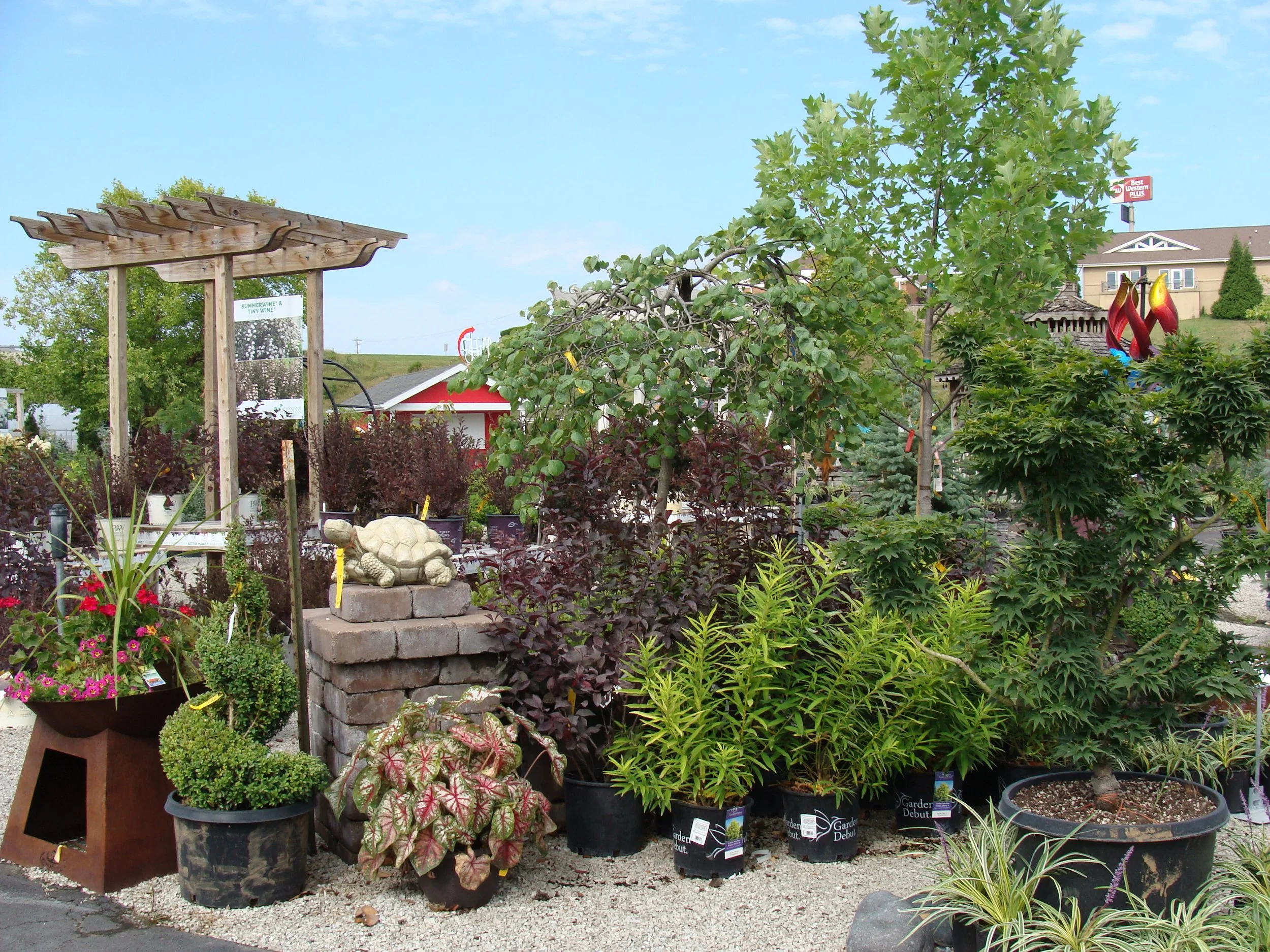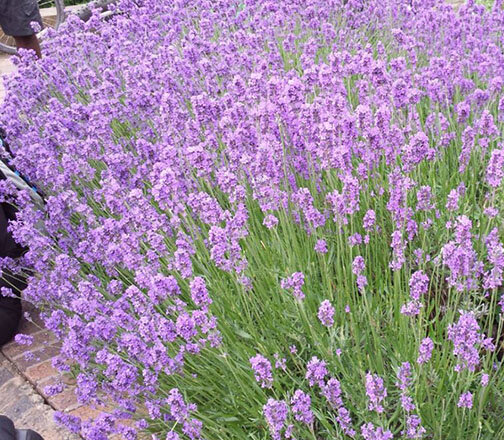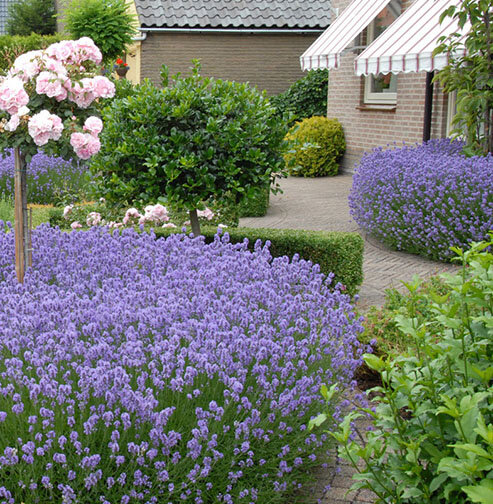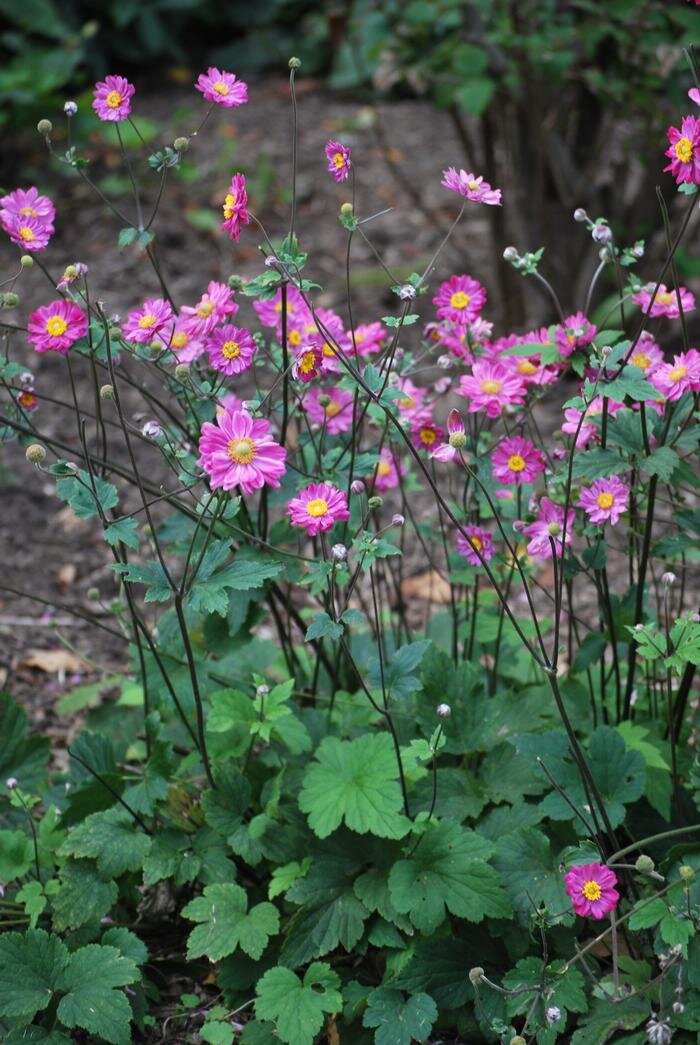'Munstead' Lavender (Lavandula angustifolia) is an English Lavender that has fragrant, cool lavender-blue spikes and gray-green, mounded foliage. Both foliage and flowers are highly aromatic. Leaves are evergreen in warm winter climates. This variety is early flowering and tolerant of tough growing conditions including heat, humidity and drought. It grows to a compact height of 12 to 18 inches and produces masses of lavender blue flowers from late spring well into summer. You can tuck this lavender into your herb garden, but it is also lovely when planted with other colorful perennials in borders, planted in a massive swath where it can sway in the breeze, or set in a pot on the patio where you can enjoy its pleasant scent. It is excellent in fresh or dried bouquets.
English lavender, has been a mainstay of herb gardens for many years. Despite its common name, it is not in fact native to England, but comes primarily from the Mediterranean region. It was reportedly named English lavender because of its ability to grow well in the English climate. This “true lavender” is commercially planted for harvesting its oils for use in perfumes. Lavender flowers and foliage are also popular additions to sachets and potpourris. English lavender varieties are more often used for culinary purposes than other types of lavender. Attracts butterflies and is bee friendly. Deer and rabbit resistant. Tolerates dry soil, shallow-rocky soil, and air pollution.
Plant 12 to 18 inches apart in average, dry to medium, well-drained, alkaline soil in an open area with full sun and good air circulation. Root rot commonly attacks plants grown in poorly drained soils. In an herb or perennial bed, ensure good drainage by planting lavender on a small mound. It prefers a light, sandy soil with somewhat low fertility. Lavender survives well in dry conditions. Do not over-water and allow the top 2” of the soil to dry before watering again. Remove faded flowers to promote continued bloom. Prune to shape in spring after new leaves appear. Prune back to 8” in spring every 3 years to control plant size and to promote robust, new growth. When there is a lot of heat and humidity, fungus can attack the plants, turning the leaves brown. To minimize the chance of having such a problem, mulch with pebbles or sprinkle sand around the base of the plant for faster evaporation. If you cut the blooms, trim in a way that thins the plant a bit, leaving it open for better air circulation. English lavender has slightly better winter hardiness than lavandin (Lavandula x intermedia) for our area, but still may appreciate a sheltered location and winter protection. Plants may not survive in winter if soils are not well-drained and/or if temperatures dip below zero degrees without protective snow cover.
Flowers will keep their perfume for months when you harvest just before they are entirely open. To dry flowers, gather a bunch of stems and hang them upside-down in a dark, well-ventilated place to preserve color and keep the stems from molding. Fresh flowers may be used in sauces, marinades, and desserts. Handle fragile dried blossoms with care and use them in teas, salts, potpourri, sachets, and crafts.
















